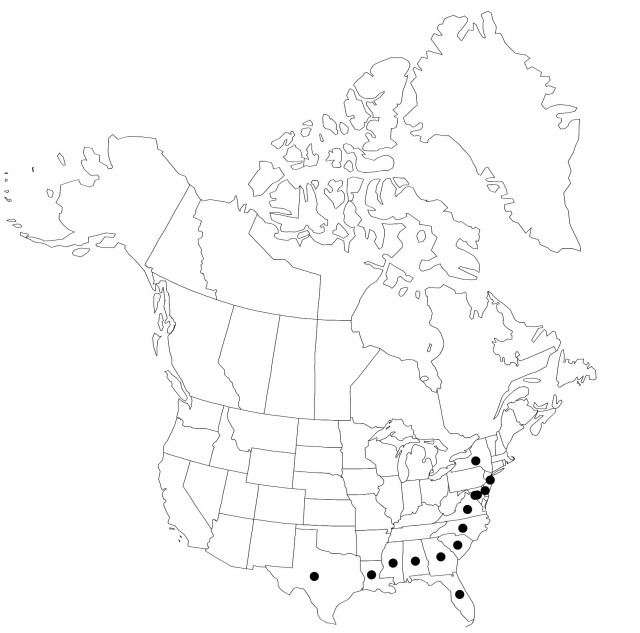Fimbristylis castanea
Enum. Pl. 2: 294. 1805.
Plants perennial, densely cespitose, 80–150 (–200) cm, bases deep-set, stout; rhizomes absent. Leaves erect or ascending, 1/2–2/3 plant height, bases of leaves hard, leathery, usually dark-brown or castaneous; sheaths distally bristlyciliate, backs chestnut-brown, glabrous; ligule absent; blades narrowly linear, 1–2 (–3) mm wide or thick, mostly strongly involute or adaxially deeply sulcate, margins scabridulous, surfaces glabrous. Inflorescences: anthelae mostly compound, ascending-branched, longer than broad; scapes wandlike, narrowly linear, 1.5–2 (–3) mm thick, distally round or slightly compressed; proximalmost leafy involucral-bract mostly shorter than anthela or equaling it, rarely slightly longer. Spikelets chestnut-brown to dull brown, ellipsoid, ovoid, or cylindric, 5–20 mm; fertile scales broadly ovate to nearly orbiculate, 3.5–4.5 mm, apex rounded, sometimes ciliolate, midrib reaching tip or excurrent as short mucro. Flowers: stamens 2–3; styles 2-fid, flat, fimbriate. Achenes lustrous brown, lenticular-obovoid or obpyriform, 1.5–2 mm, appearing striate, with many fine, vertical lines of isodiametric pits. 2n = 20.
Phenology: Fruiting summer–fall, all year southward.
Habitat: Salt marsh and brackish marsh inland
Elevation: 0–50 m
Distribution

Ala., Del., D.C., Fla., Ga., La., Md., Miss., N.J., N.Y., N.C., S.C., Tex., Va., Mexico, West Indies (Antilles), Central America
Discussion
Fimbristylis castanea, commonly placed in synonymy of F. spadicea (Linnaeus) Vahl, a widespread salt marsh perennial of tropical America, is distinguishable by its relatively shorter spikelets, usually lower habit, and by its proportionately shorter involucral bracts. Fimbristylis spadicea is hardy with us only as a greenhouse plant.
Selected References
None.
Lower Taxa
"shortened" is not a number."thick" is not a number.
